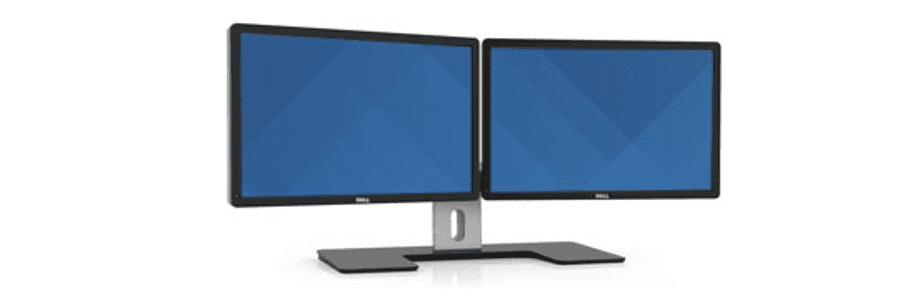Once reserved for geeks and those with deep pockets, dual monitor set-ups are now mainstream and easy to set-up. Windows 7 made things easier and brought nifty features and these have been enhanced in Windows 8 (we’re expecting good things in windows 10 as well)
Why would you want dual screens?
If you haven’t used dual screens on a computer before then you probably won’t know the benefits. You don’t know what you don’t know, right? From our experience, here’s some reasons why you might want it:
- Anyone who wants to copy from one document to another such as someone working from two spreadsheets; one spreadsheet can be open on one monitor, and a second open on the second monitor.
- Someone who wants to watch a video, such as a webinar, on one screen and take notes in the second screen.
- Programmers generally like one screen for the programming window and one for some kind of code documentation or output window.
- Graphic designers or photographers can have an editing window full screen on one monitor and a web browser or notes application on another.
- Gamers may want to extend their game window to two monitors. Aircraft simulator games make great use of two or more screens.
There are lots of other combinations but ultimately you’re saving time by not minimising or maximising windows when copying and pasting.
Are dual screens easy to set-up?
Yes! First of all you need two video connectors on the back of your computer to connect the two monitors. Most modern computers have two connectors and all but the cheapest monitors have a variety of connections. Lets consider the connectors:
VGA – This is the blue connector, use a VGA cable for this
DVI – this is the white connector, use a DVI cable for this
HDMI – the same as you would get on most flat screen TVs – use a standard HDMI cable
DP – similar in shape to HDMI, but not the same, use a Display Port cable.
Step 1
Document what connectors are on the back of your PC. Lets use an example of VGA and DVI as this is a very common combination.
Note: if you don’t have two video output connectors you will need to add an additional graphics card / Video card.
Step 2
Document the connectors on your existing monitors or the ones you are going to purchase
Step 3
Turn your computer off and using two cables you already have or you purchased, connect up the connectors from the PC (step 1) to each of the connectors on the monitors. In our example we would have a VGA (blue) cable from the PC to Monitor 1, and a DVI (white) cable to Monitor 2.
Step 4
Turn your computer on and your computer will detect the two monitors. If not, right click your desktop and choose ‘screen resolution’ and click on Detect to force it to find them. If it still doesn’t work, check your connections.
At this point you can tell the computer what you want to do with these displays. The most common configuration is to extend your desktop to give you more working area, though you could mirror / duplicate your display. Click the drop down beside ‘Multiple Displays’ and choose ‘Extend these displays’:
Move your mouse around to make sure it travels across the two screens. If they are the wrong way around, you’ll find your mouse won’t go from one screen to another, but will go off the left or right sides! You don’t need to physically move the screens, instead click and drag your screens using the images of monitors labelled 1 & 2 and move them so they read 2 & 1:
Well done, you now you have a working dual screen configuration!




